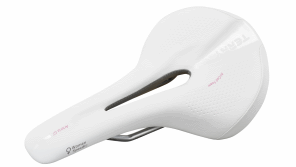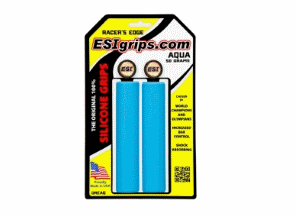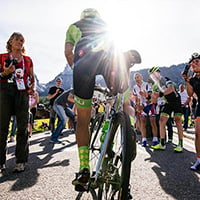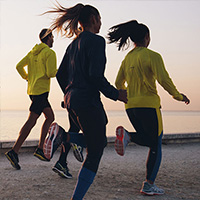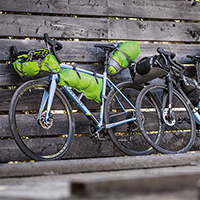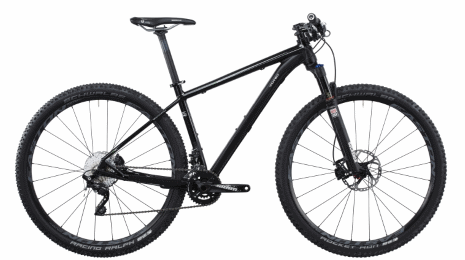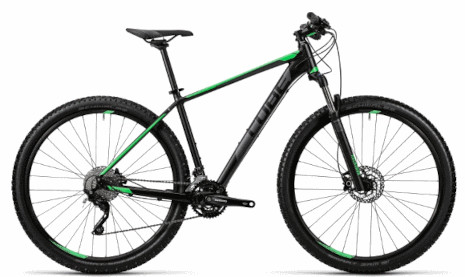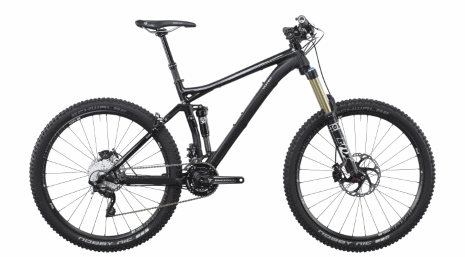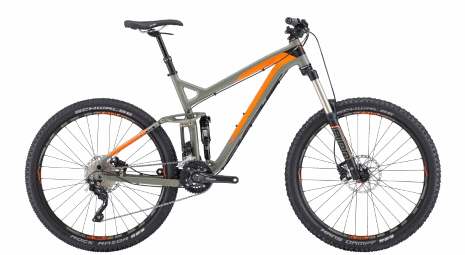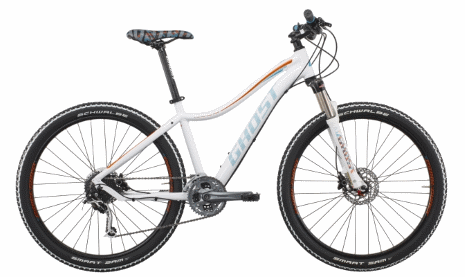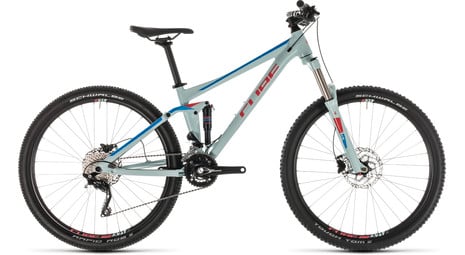Types of mountain bikes
THE DIFFERENT TYPES AT A GLANCE
BEGINNER‘S BIKES & SPORTY ALL-ROUNDERS
Even without a big budget, newcomers can expect to get their hands on a quality bike that offers reliable technology and good handling characteristics. Whether it's for everyday city life, getting out and about in your local area or going on trips with friends, these bikes can do everything. From even entry level models you can expect proper shifting comfort with a wide transmission range, a solid suspension fork and a stable aluminium frame. The seat position and geometry of these bikes are usually designed to offer beginners better comfort and improved control.
Trips in the country should be just as easy as your commute to work. The focus is on versatility and balanced, easy-to-control riding characteristics uphill and downhill – on both fixed and unpaved routes.
Typically mountain bikes come with minimal equipment. There’s no need to look for mudguards, lighting sets or stands. However, beginner bikes are usually equipped with threaded eyelets, which make it easy to attach any of these extras if you want to. Whether for everyday use or off-road adventures, powerful brakes and a high-performance shifter from Shimano or SRAM are important. For mountain bikes under £500, v-brakes are often used. The simply constructed and relatively light v-brake performs excellently in dry conditions. However, hydraulic and mechanical disc brakes win-out on braking performance in wet conditions. A suspension fork is necessary for off-road riding – usually an air suspension fork – which can be precisely adjusted to the rider's weight using a suspension fork pump.
For under £500, you can expect a stable and reliable beginner’s bike which is fun to ride over light – medium terrain, and which (with the addition of a few attachments such as mudguards and lighting) will also prove a robust and full-bodied everyday bike.
From £500 on, you can get your hands on a sporty mountain bike which is noticeably lighter due to its higher-quality components. With up to 30 gears, longer climbs will also seem a piece of cake. During descents you’ll enjoy the higher-quality brakes and suspension fork.
Beginner mountain bikes
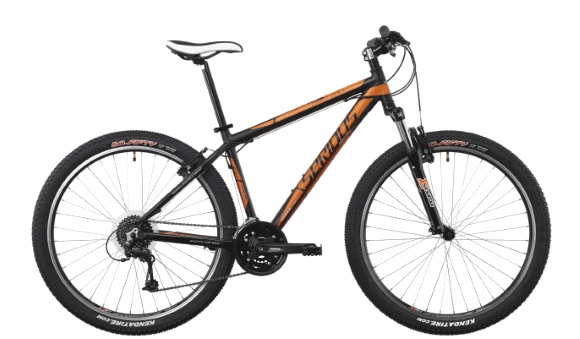
Serious Eight Ball 27,5“
- 6061 aluminium frame
- Suntour suspension fork
- Shimano Deore 24 speed systems
- 27,5“ Wheels with 2.1 Kenda tyres
- Powerful V-brakes
Allround-Mountain bikes
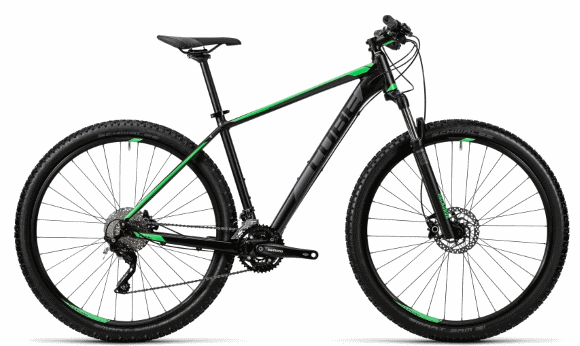
Cube Attention 29“
- 6061 Cube 29" aluminium frame
- Rock Shox 100mm Suspension fork with Lockout
- Shimano XT-speed systems
- Hydraulic disc brakes
CROSS-COUNTRY- & MARATHON BIKES
Fast uphill and effective downhill: these bikes transfer your leg power directly into forward propulsion and don’t shy away from high altitude or technical trails. Light, stiff and jerk-free, they make ideal bikes for fast laps or longer distances.
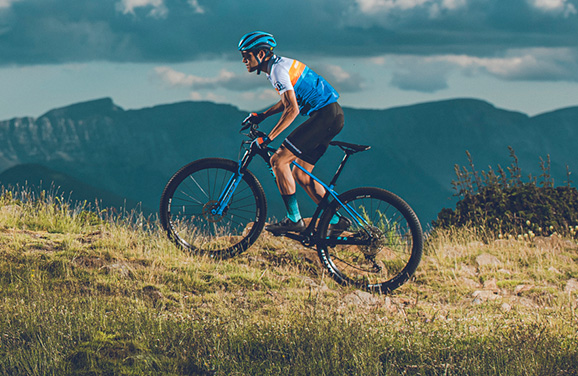
Where and how should these bikes be used?
Looking to get out for an hour and a half after work for some full-throttle action? Or, struggling on the uphill during marathon events? If you’re focused on distance and a light, effective bike is more appealing than one with extra-generous suspension travel, then you’re best off with a modern cross-country or marathon bike.
What should you invest in?
For just short of £1000 you’ll find light hardtails with very good equipment and 29"or 27.5" wheels. Naturally, if you’re looking for excellent quality components, carbon frames and the very lightest weights, then there are no limits for the prices you might expect to pay. Fullys offer a more comfortable alternative for long-distance fans. Marathon Fullys begin from about £1500. If you want to combine hardtail weight and suspension comfort, you should put aside at least £1000 or more for weight-optimised equipment.
What equipment should you expect?
Cross-country and marathon bikes are usually pretty Spartan in their equipment. As a rule, you can expect 100 – 120 mm travel. Many bikes offer you the possibility of blocking the suspension for long climbs. Often in this class 2x10 or even 1x11 gear setups are installed. Carbon is increasingly used as the frame material. However, a good aluminium frame offers hardly any weight disadvantages and will usually save you a lot of money. If you want to save on extra weight, focus on fitting light wheels and tyres. This is where the weight difference will be the most noticeable when riding.
ALL-MOUNTAIN & ENDURO BIKES
Generally speaking, these bikes are best described as specifically designed 'for high mountains and steep trails'. All-mountain bikes are efficient touring machines with sacks full of reserves – as much at home on the Alps as they are on the technical trails of your local route. Modern enduro bikes are their slightly wilder cousins. They climb almost as well, but their true strength lies in their descending abilities.
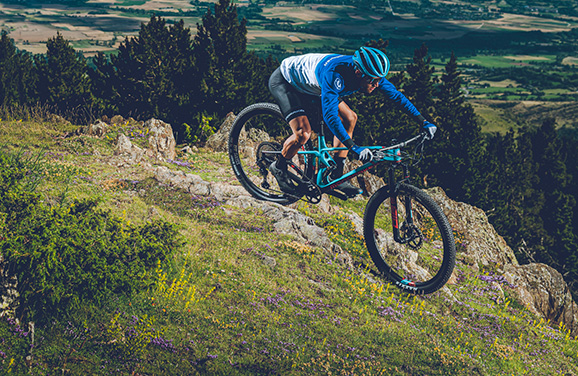
Where and how should these bikes be used?
Bikers who seek out technically challenging trails and aren't deterred by long climbs, will be happy with an all-mountain model with up to 160 mm suspension travel. Riders looking to attack more aggressively on the descent and happy to accept slight losses uphill should take a closer look at a new enduro fully model. With up to 170 mm suspension travel and slack geometry, these bikes can rip through terrain so hard that they can even handle whatever the Bike Park throws their way.
What should you invest in?
The heart of these bikes is a stable frame with a good suspension system. Unfortunately, it’s not enough to just rely on this knowledge. Many manufacturers offer different equipment variants on the basis of a frame. Solid basic models start from around £1500 and up. But of course, there’s no limit on the top prices you could expect to shell out if you had unlimited funds. Our tip: budgeting somewhere between £2000-3000 for an all-mountain/enduro bike will usually ensure a model that offers the best price/performance ratio for most riders’ needs.
What equipment should you expect?
Modern models typically feature 27.5” wheels, kitted out with wider rims and tyres. The usual pre-requisites for fun on rough and rocky terrain are biting disc brakes with at least 180 mm rotors and high-quality adjustable suspension elements from RockShox or Fox. Just as important: look for handlebar widths starting from 740 mm. Bear in mind, once you hit the £2000 mark you should also expect a dropper seatpost supplied as standard. But it’s also worthwhile considering retrofitting your own onto a cheaper bike.
MOUNTAIN BIKES FOR WOMEN
More and more women are getting into mountain biking and manufacturers are taking notice. Do female riders really need bikes specially designed for women? Yes and no. Technically, there’s nothing to stop a female biker comfortably riding a regular mountain bike if it’s the right size and model for the intended application. However, some manufacturers now offer their own women's bikes. And for good reason.
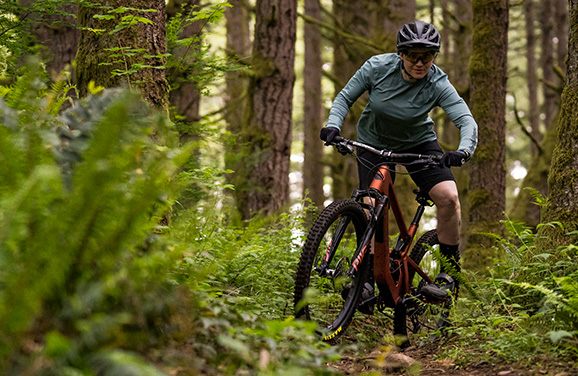
Less-than-perfect geometry
Many women may find that the traditional sitting position and geometry of a man’s MTB is uncomfortable. The top tube may feel too long, the handlebar to wide and the handles uncomfortably thick. The male saddle is probably anything but pleasant. Also useful to note: beginners will benefit from a light and manoeuvrable mountain bike far more than from a bike with a lot of suspension travel, which requires a very active riding style.
Advantages women's bike
In the case of women's bikes, these undesirable characteristics have been taken into account by the manufacturers. Designs include a frame that offers a lower standover and shorter reach, women’s saddle, suspension tuned to suit lighter riders, adapted handlebars and slimmer handles included as standard. Which specific model to choose depends, as ever, on the area of application, personal preferences and last but not least, on your own budget. But we generally recommend a relatively light hardtail MTB for the majority of riders.
Tuning tips
Instead of buying a female-specific design, with just a few modifications you can make big improvements to your regular bike. A ladies saddle like the Terry Arteria GT Women saddle is adapted to the female anatomy – without compromising its athletic look. The ESI Racer's Edge handles have a relatively thin outer diameter which gives smaller hands much more control.
